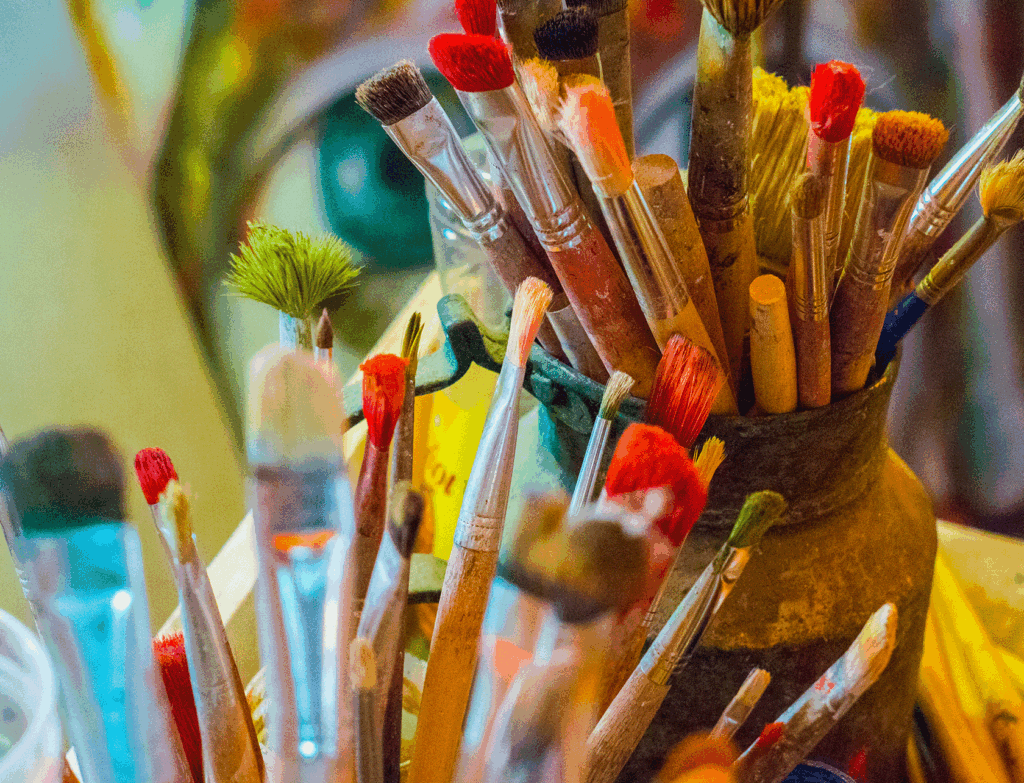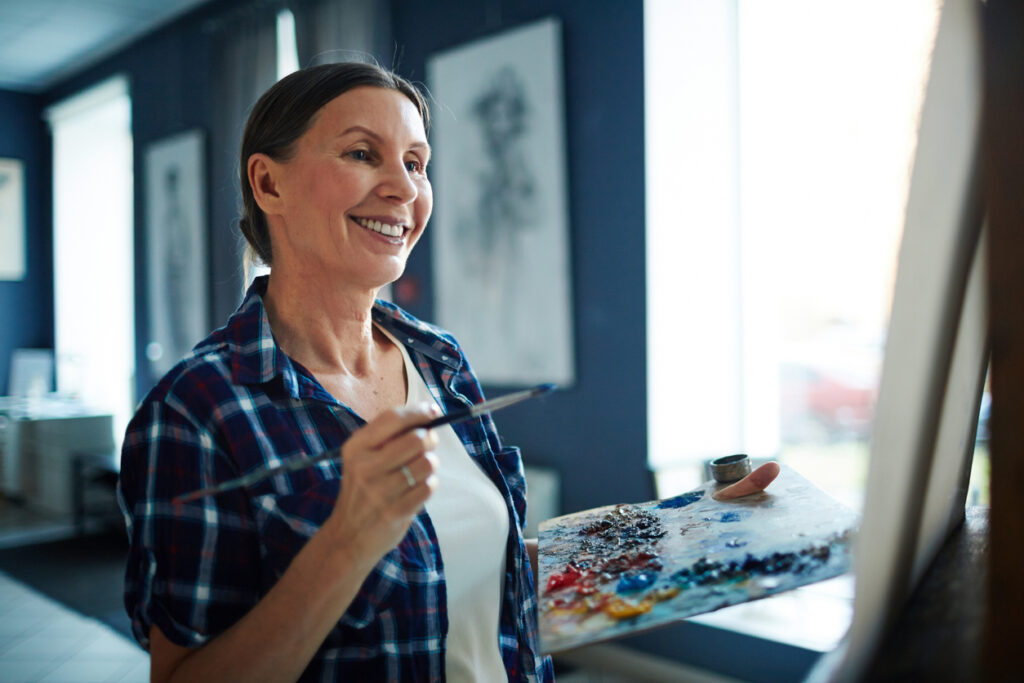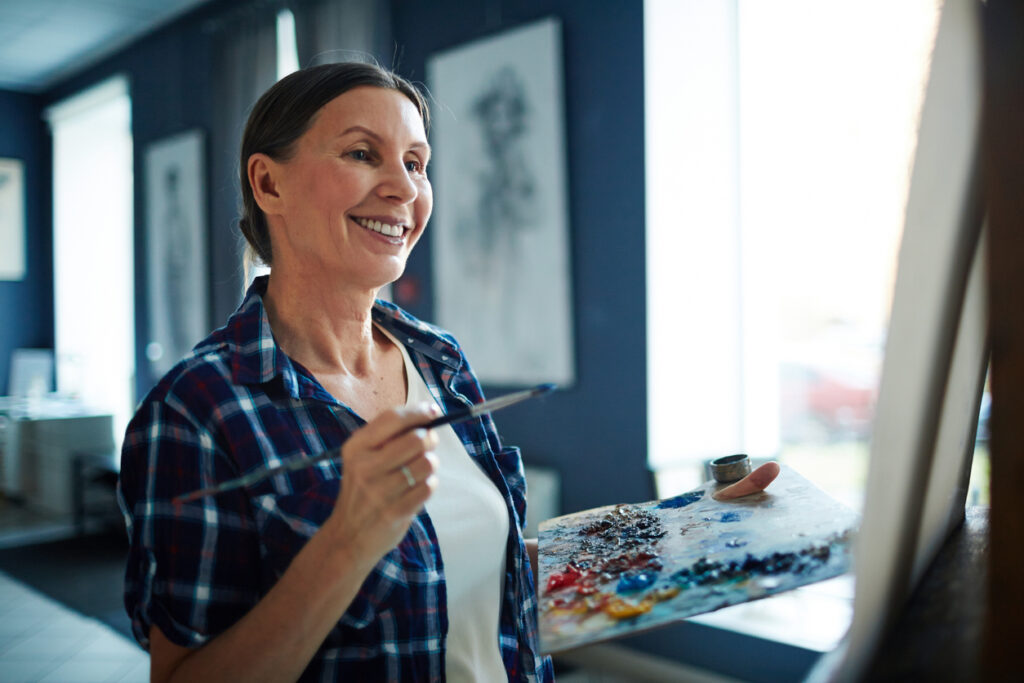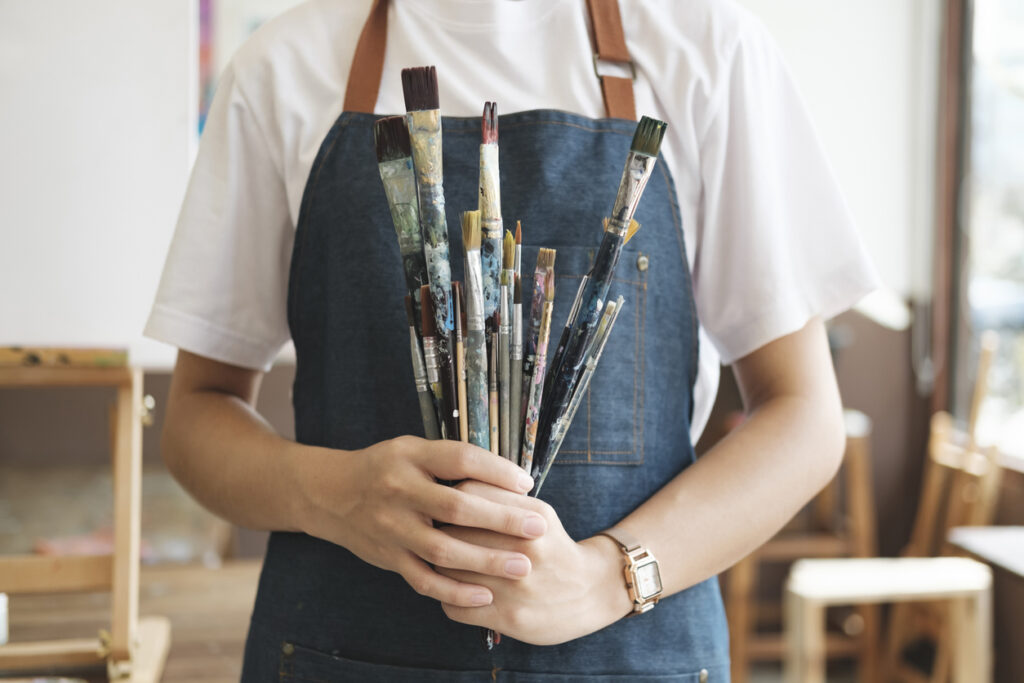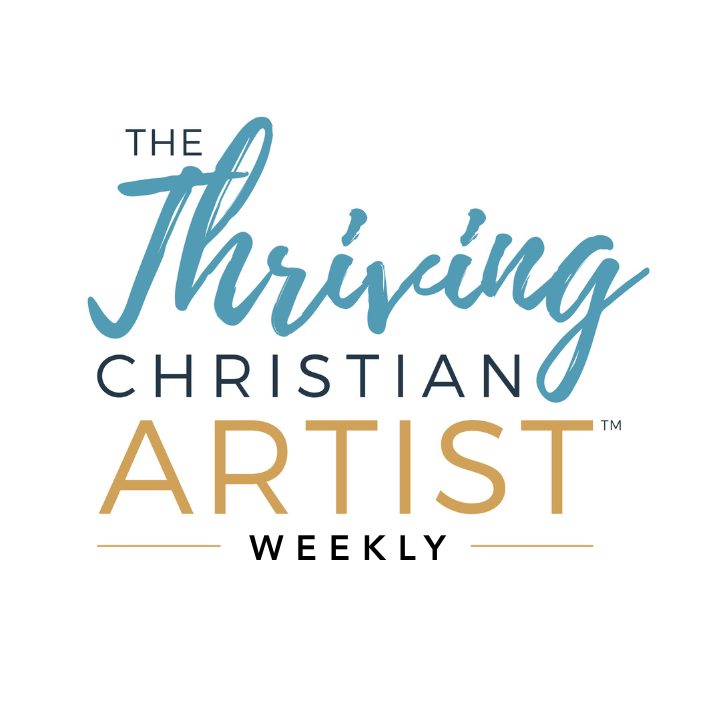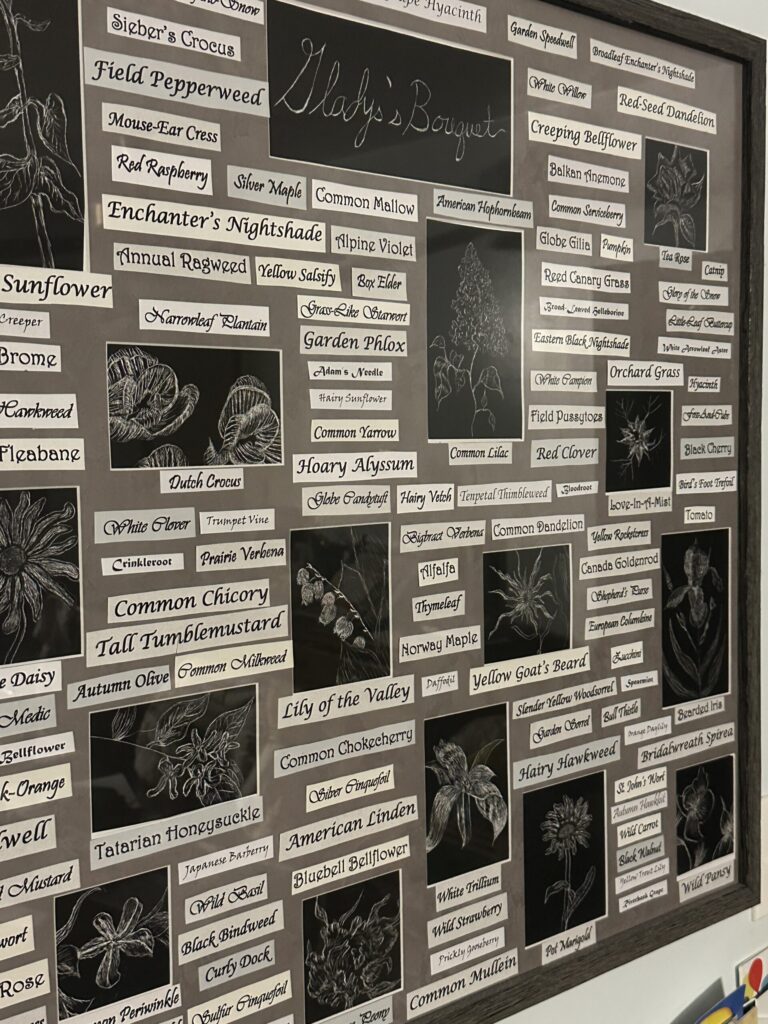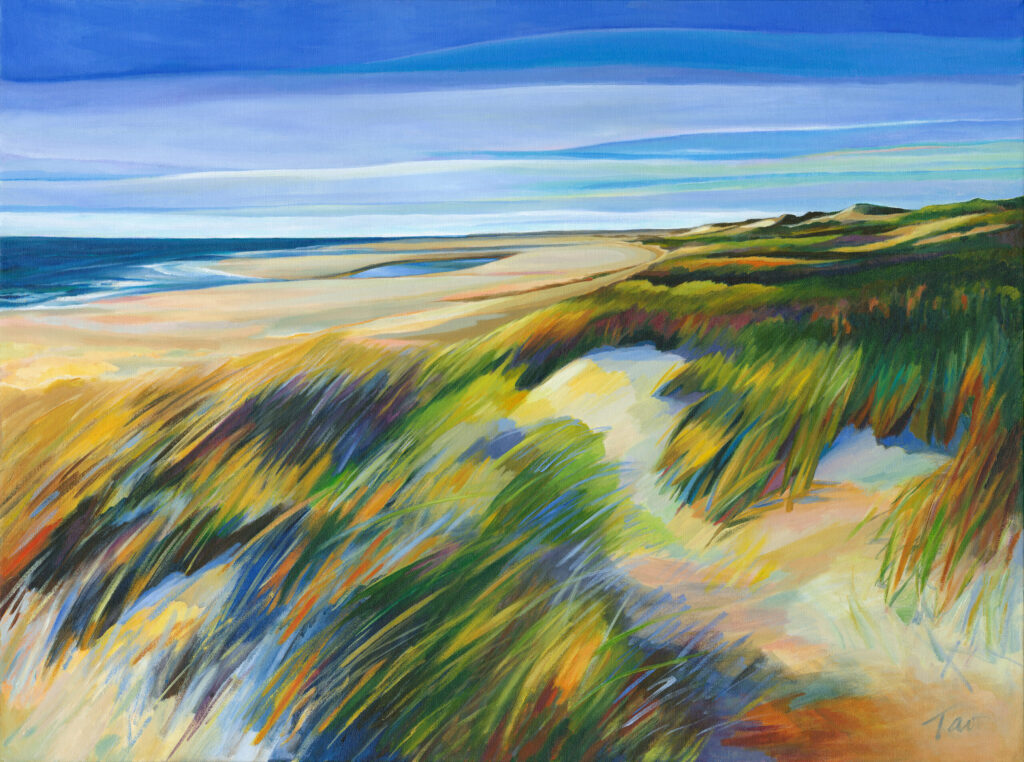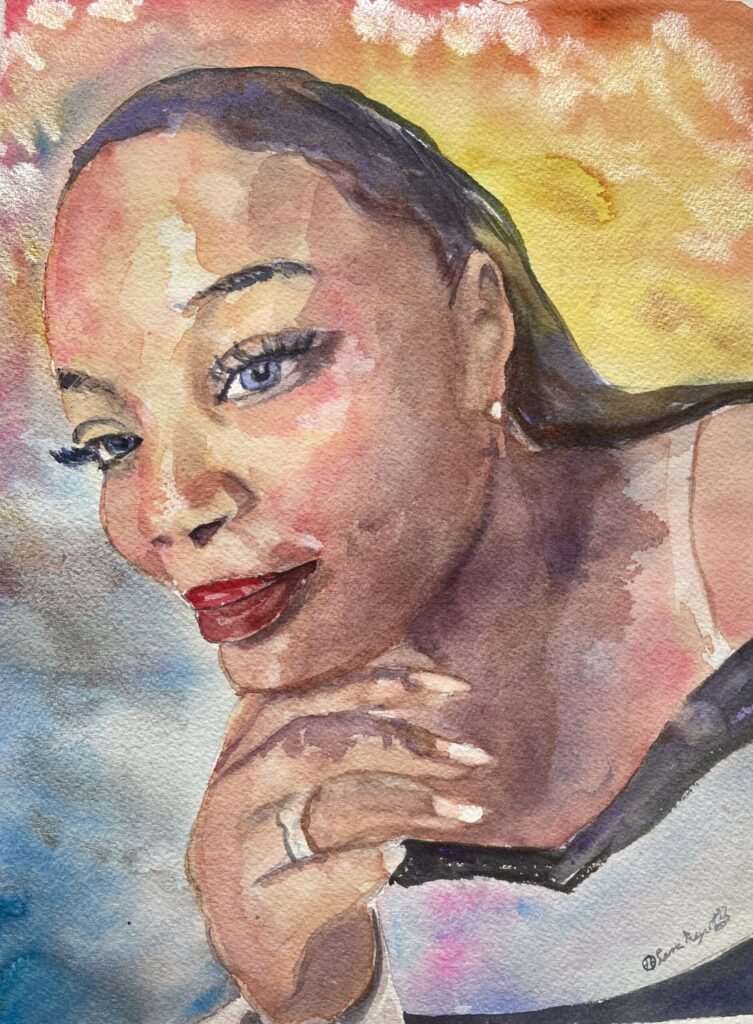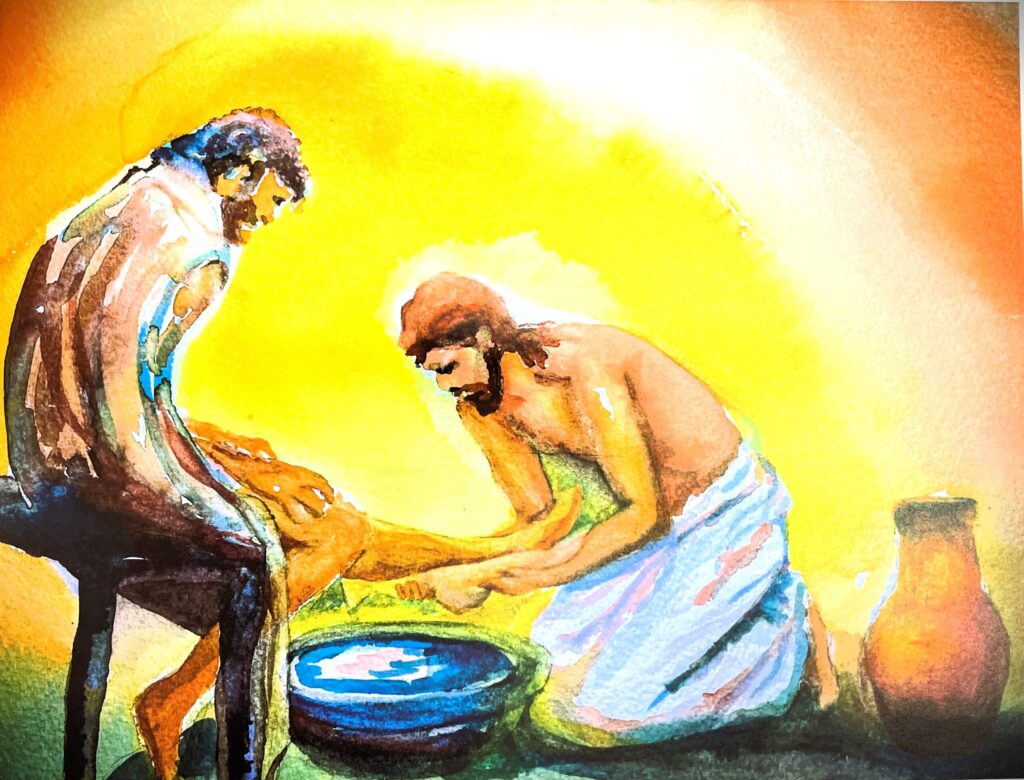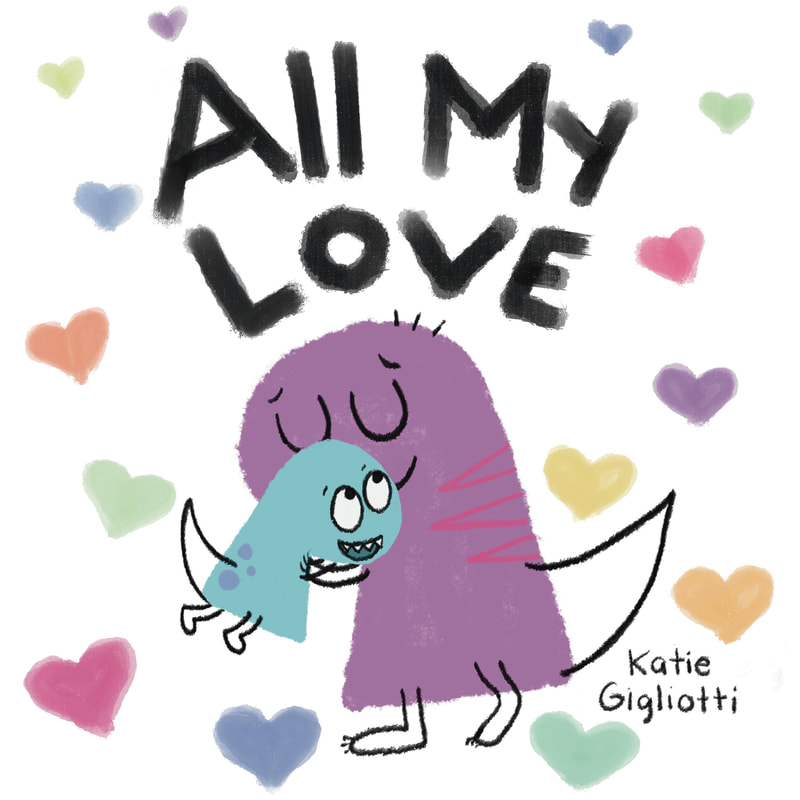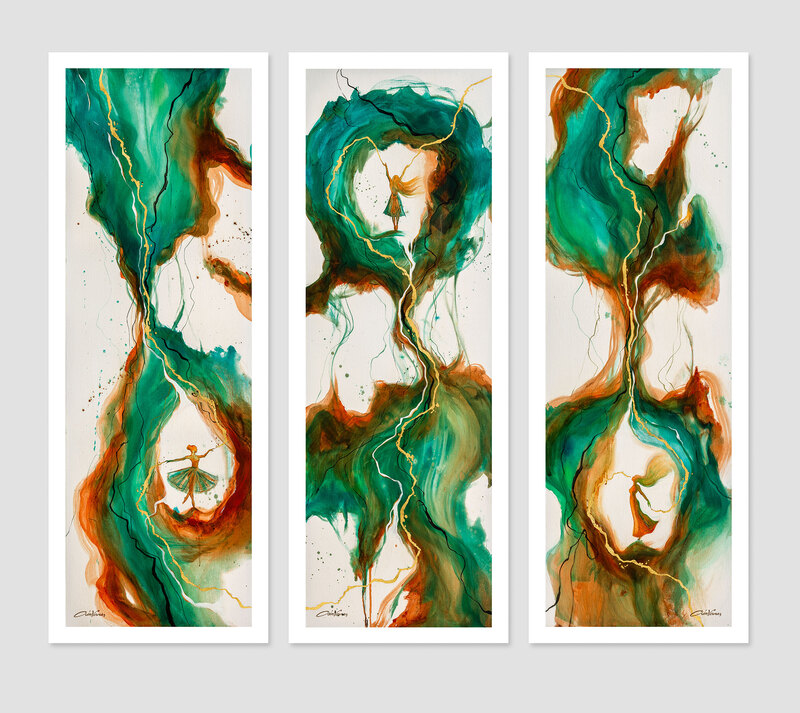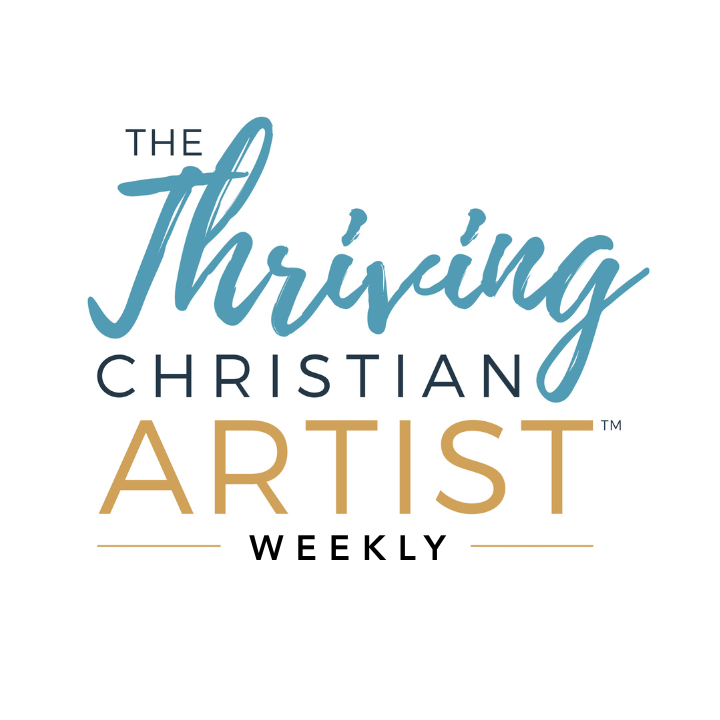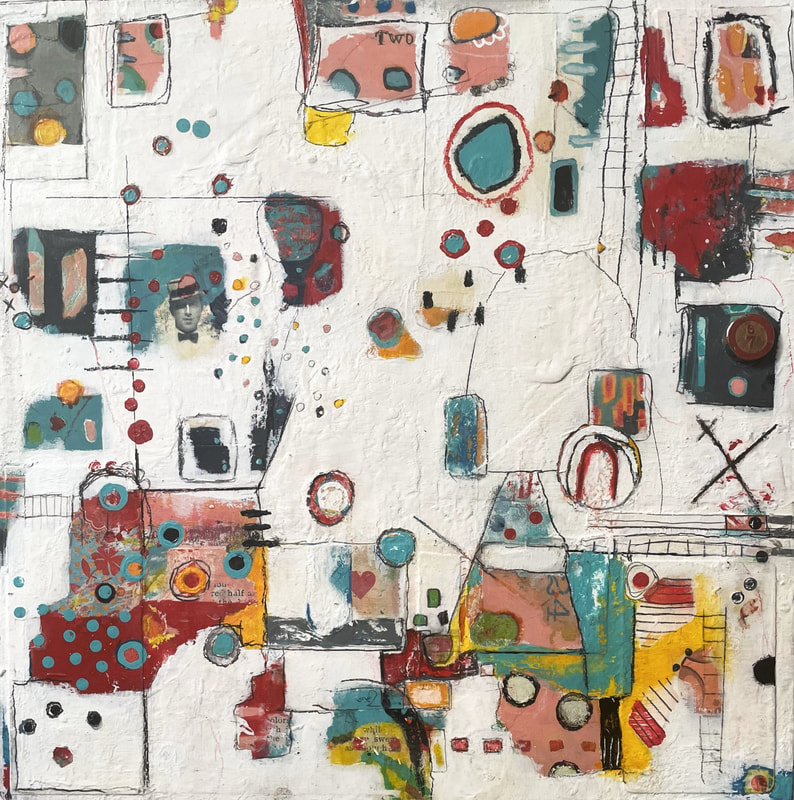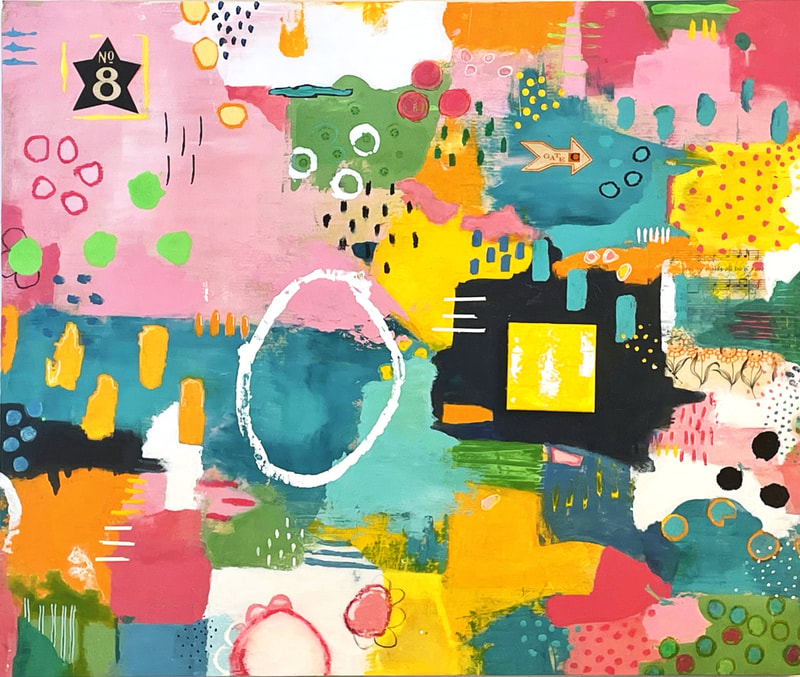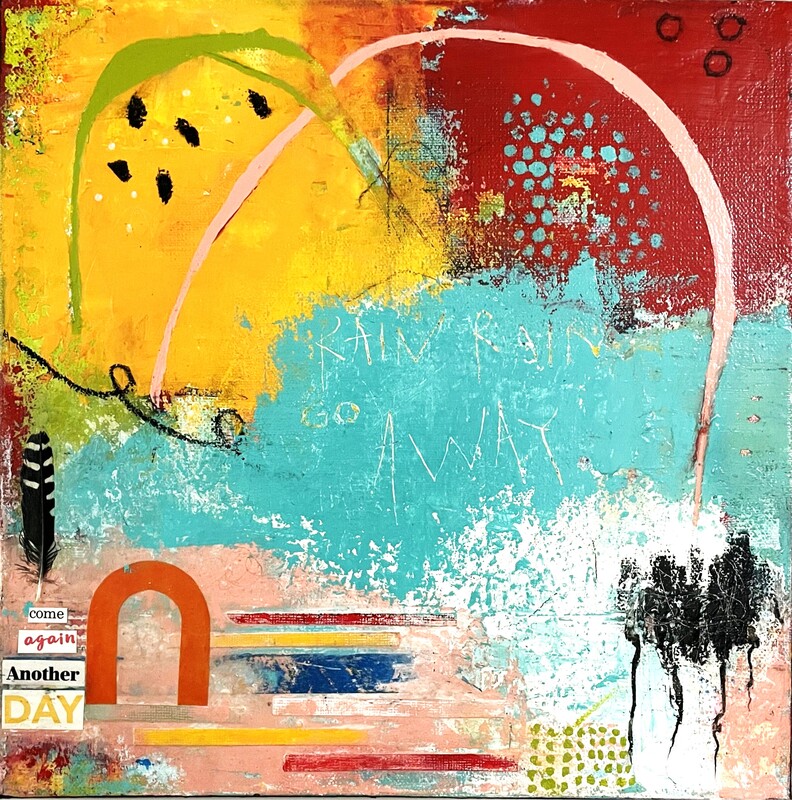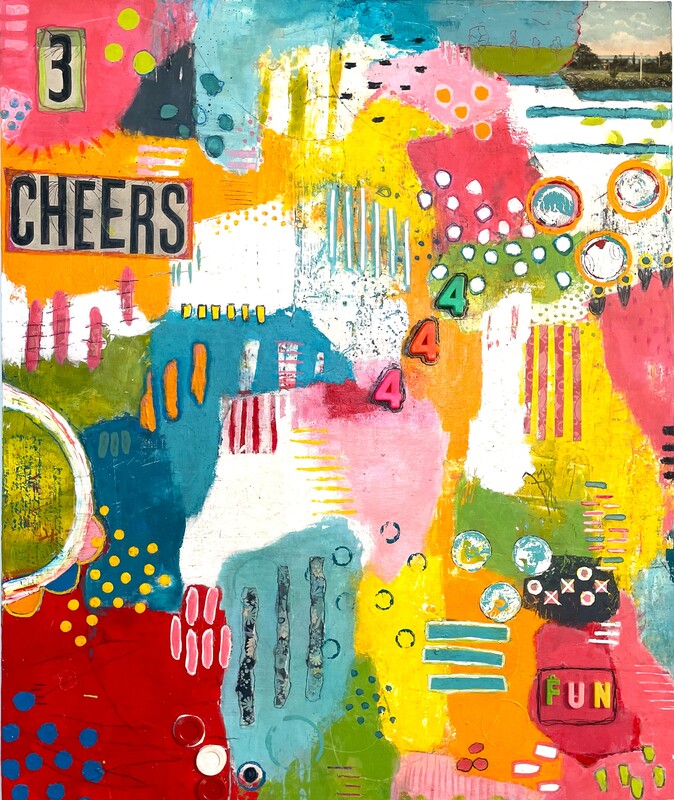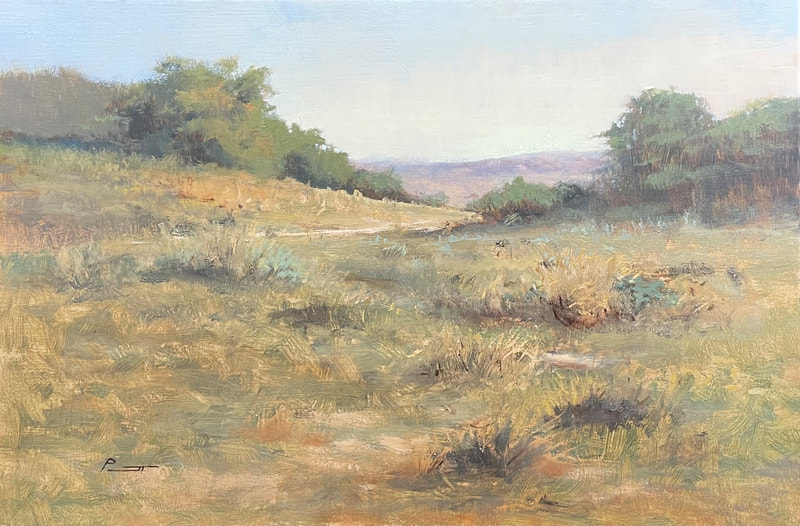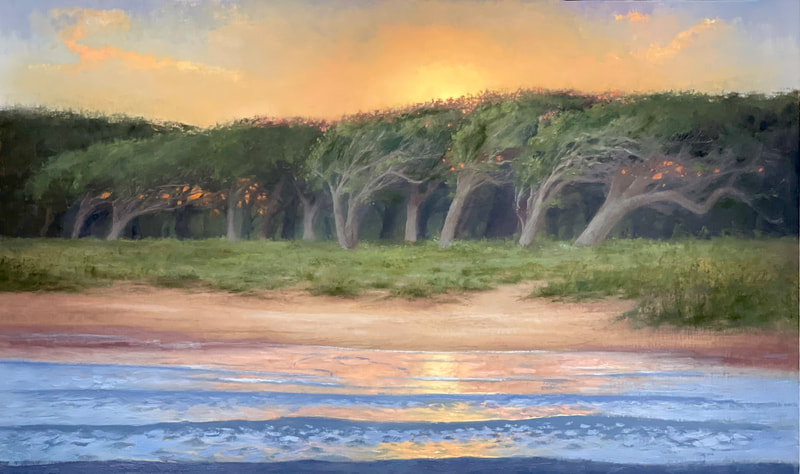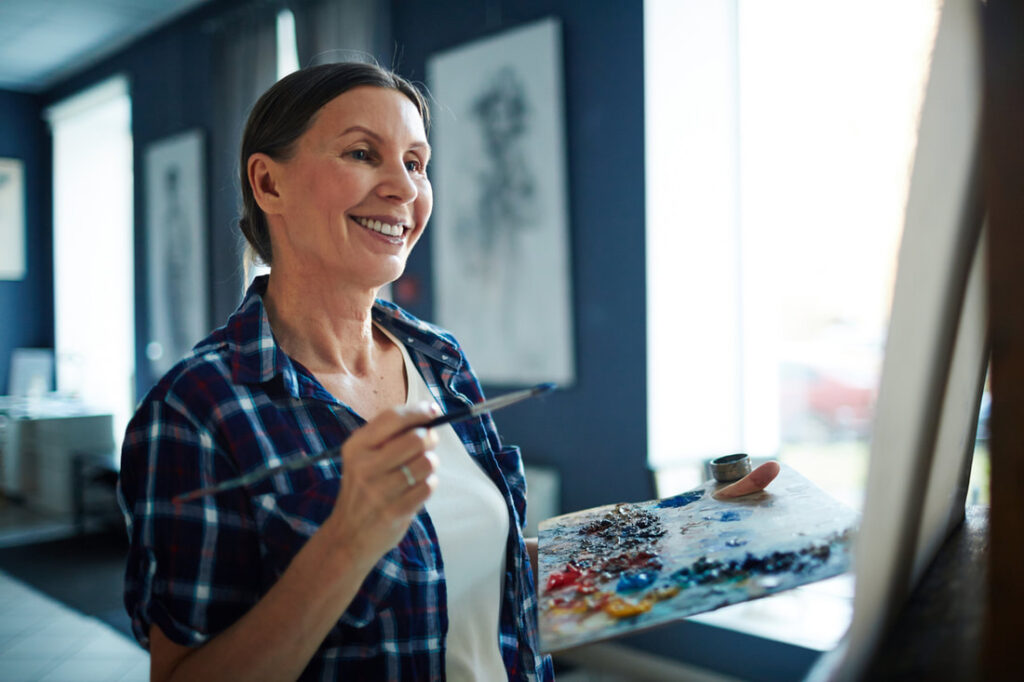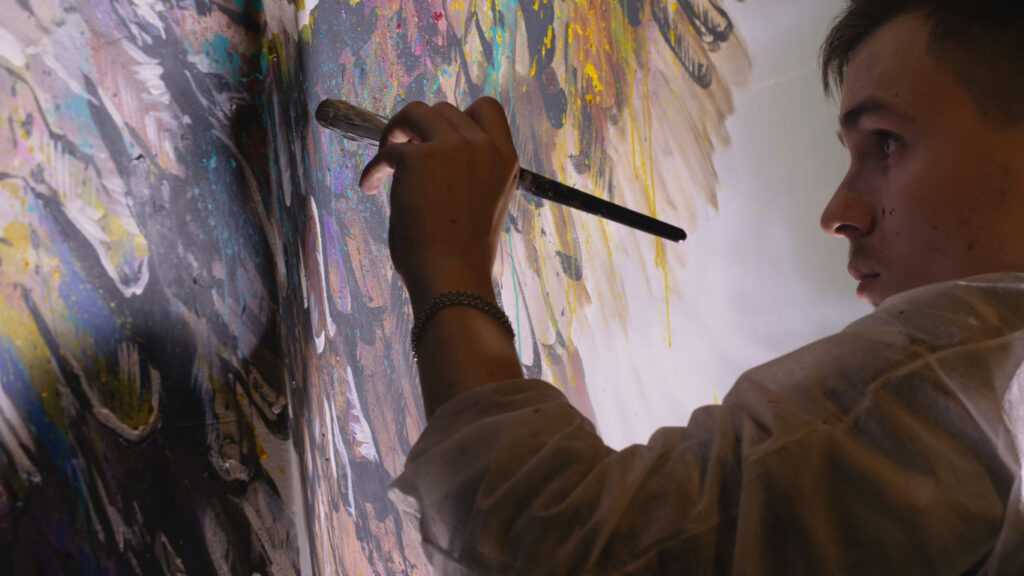
Real Stories of Transformation from the Created to Thrive Community
My friend, you’ve probably heard me share about the power of artist mentorship, but today I want to step back and let the voices of our Created to Thrive Artist Mentoring community speak directly to you—artists just like you who took a step of faith and found their lives and creative practices transformed through quality mentorship.
These aren’t just success stories—they’re testimonies of God’s faithfulness when we say “yes” to the journey He’s inviting us into.
“And we know that in all things God works for the good of those who love him, who have been called according to his purpose.” – Romans 8:28
Overcoming Limiting Beliefs and Finding Confidence
Julie Bagamary: From Self-Doubt to Embracing Her Calling
“I found the strength to overcome the lies that kept me from embracing my call to be a thriving fiber artist in God’s Kingdom. The mentoring program has helped me transform my thinking and see myself through God’s eyes.”
Julie’s journey represents what so many artists experience—that moment when the lies that have held them back for years finally lose their power through community, mentoring, and alignment with God’s truth.
Rachel Painter: Rejection Transformed into Divine Redirection
“After being rejected from art school and thinking my dream of being an artist might never come true, my life was transformed through the mentoring program. My growth accelerated and my entire life was transformed as I stepped into God’s calling for my art.”
Rachel’s story reminds us that rejection isn’t the end of the story—sometimes it’s just the beginning of a different, more aligned path that God had in mind all along.
Financial Transformation and Business Growth
Ann from Oregon: From Struggling to Six Figures
“I have increased my art teaching income over 60% and am on my way to a 6-figure year after doing the Artist Cashflow Bootcamp and becoming a member of CTT!”
Ann’s experience shows us what’s possible when artists receive not just inspiration, but practical, proven business strategies specifically designed for the creative mind.
Lance from Wisconsin: Quadrupling His Art Income
“Since I joined the mentoring program and started doing the work, I’ve increased my art business income by over 4x!”
Notice Lance’s key phrase: “and started doing the work.” Quality mentorship provides the roadmap, but it’s those who implement with consistency who see these kinds of remarkable results.
Lisa from California: $60K Growth in Art Business Revenue
“After becoming a member of CTT and implementing Matt’s teachings, I’ve increased my art business income from $32k to over $92K!”
Lisa’s testimony powerfully illustrates that professional-level income isn’t reserved for a select few in the art world—it’s available to committed artists who learn and apply the right principles.
Breaking Free from Stuckness and Self-Sabotage
Maria from Texas: From Debt to Passive Income and Gallery Success
“Within months I got out of debt, created passive income, stopped self-sabotaging. A year later I have a great monthly membership course and a cool gallery representing me.”
Maria’s journey highlights the comprehensive transformation possible through quality mentorship—financial healing, mindset renewal, and new opportunities that seemed impossible before.
Jan Tetsutani: From Self-Sabotage to Thriving Full-Time Artist
“I pushed past my fear and self-sabotage to walk into my calling as a thriving full-time artist. The mentoring program gave me both the spiritual foundation and practical tools to make this transition with confidence.”
Jan’s story speaks to the artists who know they’re called but have been held back by fear—showing that with the right support, breakthrough is not just possible but inevitable.
Finding Community and Belonging
Toni Wesner: Discovering Authentic Artistic Community
“My first Mastermind group call was this past Thursday… it was amazing! God was showing me the vital importance and blessing of community. Your mentoring group is the first real community I’ve experienced, Matt. I’m deeply humbled by it and realize the incredible amount of love and work you put into it.”
Toni’s experience reflects the deep longing many artists have—not just for techniques or business strategies, but for genuine connection with others who understand their journey.
Wendy B: Spiritual, Emotional, and Business Transformation
“This mentoring program has been truly transformative for both my art business and my spiritual and emotional growth. Through its teachings, I’ve been able to refine my style and hone my skills, all while feeling deeply supported by the CTT team and its community. It’s honestly ‘the best’ and has been a constant source of inspiration and blessing in my life.”
Wendy’s testimony beautifully captures the holistic nature of true mentorship—touching every aspect of the artist’s life, not just their creative techniques.
Clarity, Direction, and Purpose
Amy Kane Smith: Finding Confidence and Direction
“Being a part of the Created to Thrive group has been a huge benefit to me in my art practice and business. Matt’s mentoring has encouraged me to be confident in doing the work I am called to do. I have also been able to really narrow my focus and begin to formulate and work a plan to take my art business to the next level. I am taking myself and my art so much more seriously now. I know my work is good, I know what I am capable of and I am going for it.”
Amy’s journey illustrates the power of clarity—how finding focus and direction can transform not just what you create, but how you see yourself as an artist.
Jill Williams: Integration of Spiritual and Artistic Growth
“Being a part of the Created to Thrive group has enabled me to gain wisdom and insight about the process of making and selling art that I’ve been unable to access on my own because of my limited experience. Matt acknowledges that success is different for each person and doesn’t force a one-dimensional agenda. He’s also very generous with practical information and I’m learning that my spiritual and artistic growth are completely connected and should develop accordingly to experience true peace in my process.”
Jill’s testimony speaks to the unique integration of faith and art that sets Kingdom-minded mentorship apart—recognizing that true artistic flourishing happens when we align with our spiritual design.
Healing and Hope Restored
Gabe Gibitz: Breaking Through Depression After Years of Struggle
“After releasing three albums independently, I hit a dark valley of depression with my music that didn’t lift for four years. Nothing seemed to help. I tried self-motivation, goal setting, counseling and even deliverance sessions. Since I have joined Matt Tommey’s mentoring group, I have seen marked change in a matter of weeks. The Truth that Matt speaks is setting me free — Jesus is setting me free.”
Gabe’s powerful story reminds us that artistic blocks often have deeper spiritual roots—and that true healing comes through truth, community, and realignment with God’s heart.
Shanon Roberts: From Discouragement to Breakthrough Sales
“I had a major breakthrough and started successfully selling my art just 2 months after joining Created to Thrive! After years of feeling like my art wasn’t ‘good enough,’ I finally found the confidence and practical steps to share my work with the world—and the response has been incredible.”
Shanon’s experience shows how quickly transformation can happen when artists find the right support at the right time.
Marriage and Family Transformation
Couples Finding Harmony in Art and Life
Many couples in our community have shared how mentorship has strengthened not just their art businesses, but their marriages as well:
“Thriving in their Marriage & Art Business – This couple has found new joy and purpose as they built their art business together, strengthening their marriage while pursuing their creative calling.”
When both partners understand the unique challenges and opportunities of the artistic journey, deeper connection and collaboration become possible.
Men’s Journeys: How Male Artists Find Transformation in the Created to Thrive Community
While Created to Thrive serves artists of all backgrounds, many men in our community have found unique value in the program’s blend of spiritual guidance, practical business instruction, and authentic community. For male artists who may have struggled with vulnerability, career transitions, or balancing family responsibilities with creative calling, the mentorship program offers both the structure and support needed to thrive.
Matt Philleo: From Fear and Doubt to Flourishing Portrait Art
Matt Philleo’s journey as a portrait painter was marked by a familiar struggle—a heart full of artistic dreams but a mind filled with doubt. Though skilled in creating luminous acrylic portraits with his unique glazing technique, Matt hesitated to fully embrace his calling.
“What do you believe God has called you to do?” his mother-in-law once asked. Matt’s answer revealed his inner conflict: he longed to paint full-time but questioned whether he could trust God for provision.
In 2009, Matt took that leap into full-time artistry with initial success. But when portrait commissions suddenly dried up, leaving his family financially vulnerable, he found himself at a crossroads familiar to many male artists—questioning his decision and feeling the weight of provider responsibilities.
Everything changed when Matt discovered the Created to Thrive program. Beyond just art techniques and marketing strategies, Matt found something more valuable—a renewed foundation for his identity as both an artist and a man of faith.
“The program helped me understand that my worth wasn’t tied to my financial success, but my financial success could flow from my alignment with God’s purpose,” Matt shares. “I went from questioning my calling to confidently building a thriving portrait business with a steady stream of commissions.”
Today, Matt teaches art classes from a beautiful studio on five acres of land—tangible evidence of the transformation that began with addressing the core beliefs that had limited both his art and his life.
Phillip Ortiz: Breaking Through Financial Barriers
For Phillip Ortiz, a graphic designer and artist from Kansas City, the challenge wasn’t a lack of technical skill—it was a seemingly immovable financial ceiling that kept him struggling despite years of experience.
Working from his basement as a freelance designer, Phillip felt trapped by financial limitations that affected not just his art but his sense of purpose as a husband and father. The stress and frustration became constant companions.
“I was skeptical at first,” Phillip admits about discovering Matt Tommey’s work through a friend’s Facebook link. “I’d seen plenty of programs promising transformation, but something about Matt’s message resonated differently—it spoke to both the artist and the provider in me.”
What surprised Phillip most about joining Created to Thrive were the introductory “heart modules.” As someone with years of industry experience, he expected to focus primarily on business strategies. Instead, he found himself examining his fundamental relationship with both his art and himself.
“That’s when I realized the breakthrough I needed wasn’t just about technique or marketing—it was about aligning my vision with God’s provision,” Phillip explains. “Just like Peter, the professional fisherman who caught nothing until he followed divine guidance, I needed to listen and align my actions with God’s plan for my work.”
This shift transformed Phillip’s approach to both his art business and his family life, allowing him to break through the financial barriers that had previously limited his success.
“You don’t have to create from pressure; you can create from life, joy, and the goodness of God,” Phillip now encourages other male artists. “That’s a game-changer not just for your art, but for how you show up in every area of your life.”
Gabriel Stockton: Finding Direction and Community as a Watercolorist
As a watercolor artist, Gabriel Stockton appreciated the fluidity and spontaneity of his medium, but his creative practice lacked the structure and purpose needed for sustainable growth. Like many male artists, Gabriel enjoyed the solitary aspects of creation but hadn’t yet discovered the power of intentional community.
“I was creating beautiful pieces, but without a clear strategy or purpose,” Gabriel reflects. “As both an artist and a father, I felt disconnected from any sense of artistic community that could help me navigate both roles effectively.”
The Created to Thrive program introduced Gabriel to structured goal-setting that transformed his approach. Rather than seeing planning as restrictive to his creativity, he discovered how intentional strategy could actually enhance his artistic freedom and productivity.
But the most profound transformation came through the program’s emphasis on community connection. For Gabriel, who had primarily viewed art as a solitary pursuit, discovering the value of transparent relationships with fellow artists was revolutionary.
“The vulnerability I found within the group—particularly among the other men—changed everything,” Gabriel shares. “We could openly discuss not just art techniques, but the challenges of balancing creative work with family life, financial pressures, and spiritual growth.”
This newfound community empowered Gabriel to embrace a role he hadn’t previously considered—mentoring other artists. He realized that his journey wasn’t just about personal achievement but building relationships that nurtured both artistic and spiritual growth.
“I’ve learned that strength comes not just from mastering your craft, but from connecting authentically with others who understand your struggles and celebrate your victories,” Gabriel says. “That’s a lesson that has transformed both my art and my role as a husband and father.”
Trace Chiodo: Aligning Passion with Purpose
After 25 years as a graphic designer, Trace Chiodo had developed impressive technical skills in digital art, illustration, and photography. His work beautifully integrated his lifelong passions for golf and fishing—creating unique pieces that captivated art lovers.
But despite his experience and talent, Trace faced financial uncertainty and lacked clarity about how to navigate the art market independently after years of working for others.
“I needed more than just better marketing techniques,” Trace explains. “As a man of faith, I wanted my entire approach to art to reflect my belief in living by faith. I was searching for a way to fully align my artistic career with God’s purpose.”
The Kingdom-focused approach of the Created to Thrive program provided exactly what Trace was seeking—a mentorship experience that addressed both artistic growth and spiritual alignment. Through the program, Trace experienced concrete transformations:
“I now have my own dedicated studio space, which has been crucial for my creative process,” Trace shares. “I’ve developed additional income streams that provide stability for my family. I’m exhibiting beyond just local art centers, and more people are discovering and connecting with my work.”
For Trace, the mentorship program offered a holistic framework that honored his desire to be both successful in business and faithful to his spiritual convictions—a balance that many male artists struggle to achieve.
“The program gave me permission to pursue excellence in both my art and my business without compromising my values,” Trace says. “That integration has been the key to becoming truly successful as an artist and as a man.”
The Unique Value for Men in Artistic Community
These stories highlight how male artists in the Created to Thrive community have found unique value in a program that addresses their specific challenges:
- Identity and Purpose: Many men struggle with questions of identity when pursuing creative careers. The program helps them integrate their artistic calling with their sense of purpose and responsibility.
- Authentic Vulnerability: The community provides a safe space for men to be vulnerable about their struggles without fear of judgment—often a rare experience in male-dominated environments.
- Practical Stewardship: The program’s emphasis on good business practices resonates with men’s desire to be good stewards of their talents and resources.
- Integrated Faith: For men of faith, the program offers a way to align their creative careers with their spiritual values without compromise.
- Balancing Roles: Many male artists in the program have found strategies for balancing their artistic calling with their roles as husbands, fathers, and providers.
Through the testimonies of artists like Matt, Phillip, Gabriel, and Trace, we see how the Created to Thrive program addresses the whole person—not just artistic technique or business strategy, but the heart, mind, and spirit of the artist. For these men and many others in our community, this holistic approach has been the key to lasting transformation in both their art and their lives.
Could Your Story Be Next?
These testimonials represent just a small sample of the thousands of artists who have found transformation through the Created to Thrive Artist Mentorship Program. Each journey is unique—reflecting God’s individual design for each artist—yet all share common threads of breakthrough, growth, and alignment with divine purpose.
As Paulette Insall so powerfully stated: “I just have to say it is the BEST investment I’ve made in my career as an artist! He covers all the bases; business, mindset+spiritual, and creativity. If you are ready to stop making excuses and get to work on stepping fully into the artist God created you to be, you need to go sign up!”
My friend, I believe your story of transformation is waiting to be written—and it could begin today. What limiting beliefs, financial challenges, creative blocks, or sense of isolation might be overcome through the right mentorship community?
As Judy Goddard wisely observed: “Matt Tommey is a successful artist whose love of the Lord is deep and intimate. That relationship informs every part of his life. He is sharing what he’s learned on his spiritual journey, as it pertains to thriving and prospering as an artist. I highly recommend that any Christian who has been called to the arts, and desires to flourish in them, work with Matt and see the difference it will make in their lives.”
The question isn’t whether transformation is possible—these testimonials prove that it is. The question is whether you’re ready to say “yes” to the journey God has for you.
[Get Started Today for Just $14!]
I’m cheering you on!
Matt Tommey
Frequently Asked Questions About Artist Testimonials
Are these results typical for members of the Created to Thrive program? While each artist’s journey is unique, the transformations shared in these testimonials represent common patterns we see among members who actively engage with the program resources and community. The degree and pace of change varies based on factors like starting point, consistency of implementation, and individual circumstances. However, our members consistently report meaningful growth in areas of mindset, spiritual connection, creative confidence, and business acumen. Those who experience the most dramatic results typically commit to regular participation in live sessions, community engagement, and consistent application of the principles and practices taught in the program.
How long does it typically take to see results like these? The timeframe for experiencing transformation varies based on individual circumstances, but many members report noticing initial shifts in their thinking and creative approach within the first 30 days of joining the program. Tangible business results, such as increased sales or higher pricing, often emerge within 3-6 months of those who implement the business strategies consistently. Significant transformations like career changes or substantial income increases typically occur over 6-12 months of dedicated engagement. The stories shared here represent members at various stages of their journey—some who’ve been with us for several years and others who experienced breakthroughs within their first few months.
What if my situation or creative medium is different from these testimonials? Created to Thrive serves artists across virtually every creative medium—painters, sculptors, fiber artists, photographers, jewelers, woodworkers, potters, and many more. The principles of Kingdom creativity, mindset renewal, and art business development apply universally, while the specific application is tailored to your unique circumstances. Our community includes artists from diverse backgrounds, geographic locations, and stages of development. The varied testimonials shared here reflect this diversity, showing that transformation is possible regardless of your starting point, medium, or specific challenges.
Can I connect with these artists to hear more about their experience? Many of the artists featured in these testimonials actively participate in our community and regularly share their ongoing journey in our live sessions, BackStage Pass interviews, and Case Studies. When you join the Created to Thrive Artist Mentorship Program, you’ll have opportunities to connect directly with fellow members, ask questions, and learn from their experiences. We also frequently feature in-depth interviews with members who have experienced significant breakthroughs, allowing you to gain deeper insights into their transformation process and apply relevant strategies to your own journey.
Explore More About Artist Mentorship Benefits
- How Artist Mentorship Accelerates Creative Growth and Skill Development Discover how mentorship can fast-track your artistic skills and creative voice…
- The Financial ROI of Investing in an Artist Mentorship Program Discover how mentorship creates tangible financial returns for Christian artists…
- Building Your Professional Network Through Mentorship Communities Learn how mentorship communities create powerful connections for artists…
